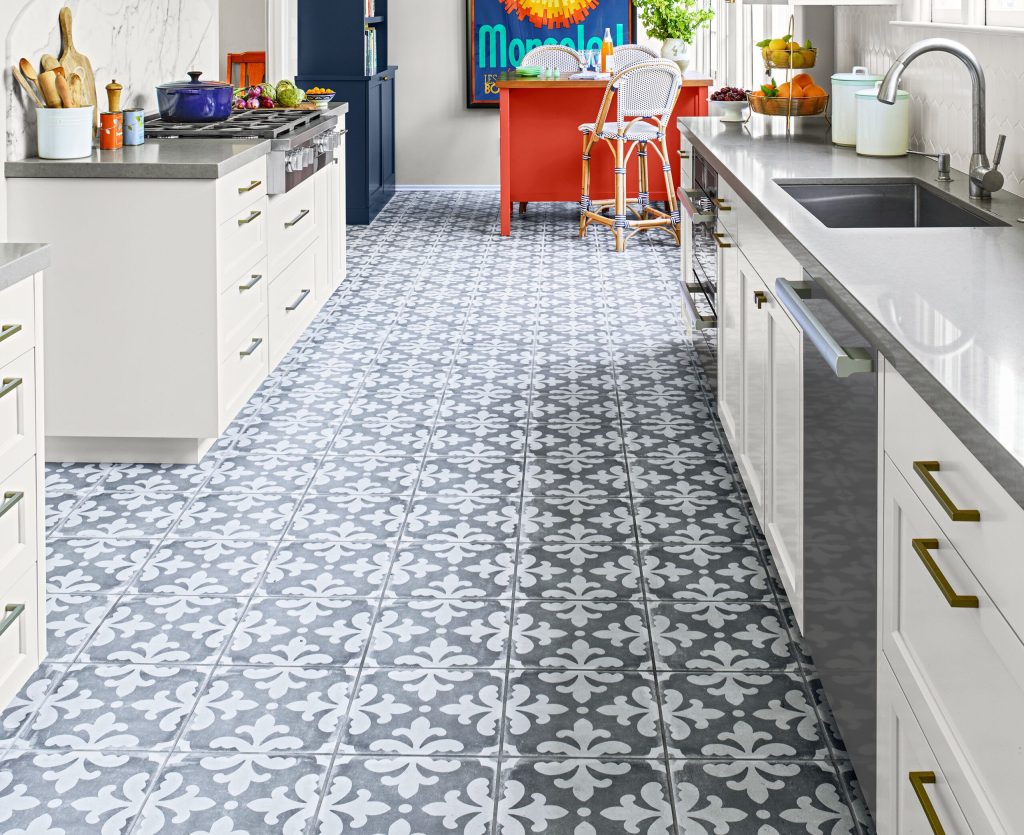Your kitchen is not just a place to cook; it’s the heart of your home, where family and friends gather to create memories. The choice of flooring in your kitchen can significantly impact its aesthetics, functionality, and durability. In this 1,500-word article, we’ll explore a wide range of kitchen flooring options, discussing their characteristics, pros and cons, and how to choose the perfect one for your space.
The Role of Kitchen Flooring
Kitchen flooring serves as the foundation of your kitchen’s design and functionality. It must withstand heavy foot traffic, spills, and more, all while complementing your kitchen’s overall style. Let’s delve into the various kitchen flooring options available and their unique features.
1. Hardwood Flooring
Pros:
Timeless, classic appearance.
Durable and long-lasting.
Can be refinished to refresh its look.
Adds warmth and character to your kitchen.
Cons:
Susceptible to water damage if not properly sealed.
Prone to scratches and dents.
Requires regular maintenance.
2. Laminate Flooring
Pros:
Affordable and easy to install.
Resistant to stains, fading, and moisture.
Available in a wide range of designs and colors.
Low maintenance and easy to clean.
Cons:
Can sound hollow underfoot.
Not as durable as hardwood or tile.
Difficult to repair if damaged.
3. Tile Flooring
Pros:
Highly durable and long-lasting.
Resistant to water, stains, and scratches.
Versatile in design, including various shapes, sizes, and colors.
Ideal for underfloor heating systems.
Cons:
Cold and hard underfoot.
Grout lines can be challenging to clean.
Can be prone to chips and cracks if heavy objects are dropped.
4. Vinyl Flooring
Pros:
Affordable and available in numerous styles.
Comfortable to walk on and offers some resilience.
Water-resistant and easy to clean.
Quiet underfoot and insulating.
Cons:
Not as durable as some other options.
Prone to damage from sharp objects or heavy furniture.
May not add the same resale value as hardwood or tile.
5. Stone Flooring
Pros:
Elegance and natural beauty.
Highly durable and resistant to moisture.
Can add significant resale value.
Suitable for radiant heating systems.
Cons:
Expensive to install.
Cold underfoot.
Requires periodic sealing.
Heavy and may require additional structural support.
6. Cork Flooring
Pros:
Eco-friendly and sustainable.
Provides a comfortable, cushioned surface.
Resistant to mold, mildew, and allergens.
Sound-absorbing properties.
Cons:
Susceptible to scratches and dents.
Requires sealing to prevent moisture damage.
Fading may occur in direct sunlight.
7. Bamboo Flooring
Pros:
Eco-friendly and renewable.
Hard and durable, similar to hardwood.
Stylish and contemporary look.
Resistant to moisture and stains.
Cons:
Sensitive to humidity and may require climate control.
Prone to dents and scratches.
Limited design options compared to other flooring types.
8. Concrete Flooring
Pros:
Highly durable and long-lasting.
Resistant to moisture and stains.
Can be polished or stained for a unique look.
Suitable for radiant floor heating.
Cons:
Cold and hard underfoot.
May require regular sealing.
Limited design options without additional treatments.
Conclusion: Finding Your Ideal Kitchen Flooring
Selecting the right kitchen flooring option is a crucial decision, considering the unique demands of this space. It’s not just about aesthetics; it’s about durability, maintenance, and how the floor suits your lifestyle.
By understanding the characteristics, pros, and cons of different kitchen flooring options, you can make an informed choice. Whether you prioritize the classic beauty of hardwood, the resilience of tile, or the eco-friendliness of cork, there’s a kitchen flooring option that suits your needs and enhances the heart of your home. Your ideal kitchen foundation awaits.
You may also like
-
Hiring An Architect To Design Your Home
-
Winter is Coming: A Kansas Building Manager’s Guide to Preventing Frozen Pipes with Commercial Plumbing Services in Kansas
-
How to Install an Artificial Hedge Easily
-
Get Exclusive Diwali Offers on Whirlpool Double Door Refrigerators
-
Who is Best Pipe and Joint System Supplier in Malaysia

